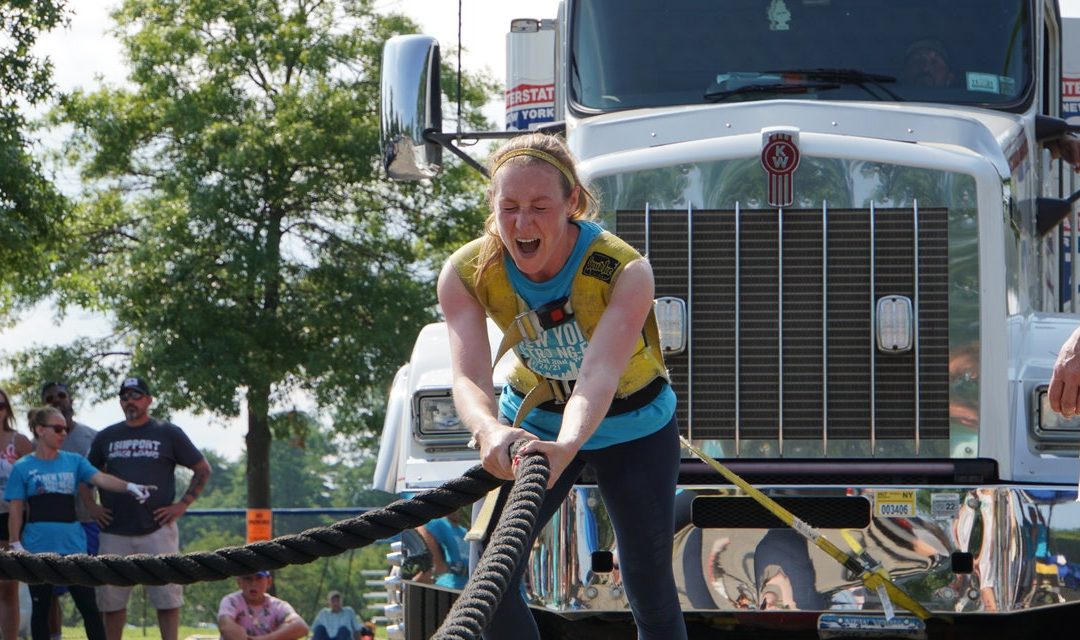The only thing that seemed to have any noticeable impact on my sadness was returning to the gym. I craved the confidence I had before my miscarriage—that inner and outer strength—so my coach built entire workouts around making me feel empowered. I channeled all my anger, exhaustion, and hurt into moving the barbell. As I let out beastly grunts of exertion, I exhaled all my pain, forcing it out of my body. Every time my muscles burned, I white-knuckled the bar and pushed through, reminding myself that I could overcome discomfort. And for a glorious few hours after I left the gym, I bounded through life with my shoulders pulled back, my arms slightly bent to show off my growing biceps, and my chest pressed forward. I couldn’t explain it, but strength training was bringing me back to life. I could face the rest of the day with the sense of accomplishment that comes from trying something difficult and overcoming it.
Lifting gave me a chance to reconnect to my body and take note of what I was feeling at any given moment. It forced my attention to my abdomen, an area that had been home to tremendous stress and sadness. The moment I took a gulp of fresh air and braced against my weight belt to steady my core in preparation for pulling the barbell, I had to believe it could also be a place of strength.
There’s a biological reason why lifting heavy things can feel so empowering, too, according to author, psychologist, and Stanford University lecturer Kelly McGonigal, PhD. McGonical explained that bracing your core muscles “feeds directly into areas of the brain that are monitoring for signals of things like safety and power.” When your brain gets such a strong signal from this one single action, “it computes [it] into a sense of self that is not, ‘My bicep tendon is pulling on my bone.’ It’s, ‘I’m powerful.’”
If I was going to move weights successfully and safely, I had no choice but to believe that my brain and muscles would work together. Rebuilding my confidence in that way helped me not only recover from the loss, but also endure the subsequent months of fertility clinic visits and negative pregnancy tests.
“Ultimately, to put a barbell on your back and to lower your body and stand up again, or to pick up something heavy off the ground and put it back down again, you have to have a certain amount of self-trust,” Mariah Rooney, a licensed clinical social worker and cofounder of Trauma Informed Weight Lifting, a nonprofit that trains coaches, certified personal trainers, and physical therapists to take a trauma-informed approach to client work, told me. “People who’ve experienced trauma often lose that, they lose the connection to self. To be able to have that embodied experience and then eventually have that translate into something else is really powerful.”
A few days after my conversations with McGonigal and Rooney, I dug through emails I had sent my doctor at the beginning, middle, and end of the long process of miscarrying, which took four weeks in all. Then I looked through my phone’s camera roll from the same time period. Each time my notes to my doctor were frantic or frustrated, I noticed that on those days, I also went to the gym. While a very real part of me was seething, another part was smiling as each rep of a heavy deadlift crashed to the ground. The feeling of the cold metal of the bar and the rough edges of the knurling on my palms sent a jolt to my system, triggering the sense memory of strength. It was as if my brain knew my body needed those moments—proof of capability and power.
Lifting didn’t erase the burden of my miscarriage, but it reminded me again and again that I could endure hard things. Now I know that strength isn’t about being immune to pain or impervious to failure. It’s about managing the struggle.
Adapted from Secrets of Giants by Alyssa Ages. Copyright © 2023 by Alyssa Ages. Published by Avery Publishing Group, an imprint of Random House, a division of Penguin Random House LLC. All rights reserved.
